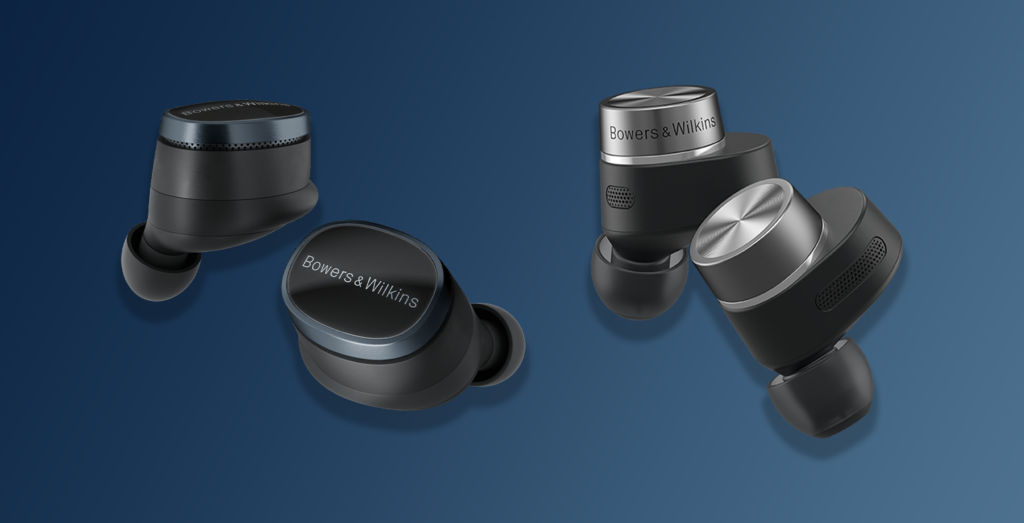The Bowers and Wilkins Pi8 has just hit the market. It’s one of the year’s biggest releases for true wireless earbuds, but is it a true upgrade from the Pi7 S2? When it comes to premium audio experiences, Bowers and Wilkins has established itself as a leading name in the industry. In this detailed comparison of the Bowers and Wilkins Pi8 and Pi7 S2, we delve into the innovative features, sound performance, and design elements that set these true wireless earbuds apart. Whether you’re an audiophile searching for impeccable sound quality or a casual listener seeking comfort and style, understanding the differences between the Pi8 and Pi7 S2 will help you make an informed decision.
What You Get
| Pi7 S2 | Pi8 |
|
|
Look & Feel
There’s a big redesign from the Pi7 S2 to the Pi8. B&W’s true wireless models have always carried an elegant design, but the Pi8 does a better job of reflecting their aesthetics compared to the Pi7. Both require a twist on insertion and have similar levels of comfort. On occasion, my ear feels a bit stretched out and fatigued with both models.
Design & Functionality
The Pi8 has more than an exterior redesign. It also sports a new carbon cone driver that aims for more precise tuning compared to the hybrid configuration of the Pi7. You also get much better touch sensors this time around, registering quicker responses with more consistent feedback. The app allows you to customize the controls for both earbuds. Noise-canceling is pretty strong on both the Pi8 and Pi7, muting a lot of obstructive noise in the low and mids.
Bluetooth
Even though the Pi8 makes a lot of upgrades in terms of CODECs, I actually experienced a lot more dropouts and desynching with it compared to the Pi7. However, if you absolutely need aptX Lossless then the Pi8 is the way to go.
Battery Life
The battery life of both the Pi7 and Pi8 remains one of this series’ most disappointing aspects. There is barely an upgrade between the Pi7’s 5-hour battery life and the Pi8’s 6-and-a-half-hour battery life. If a long battery is one of your main attractions for purchasing true wireless earbuds, neither the Pi7 or Pi8 are top picks on the market.
Soundstage
These earbuds have very similar soundstages. Their total width is about the same, while sound placement and separation are equally spacious. You get a similar level of immersion, but the real difference is how the layers of sound stack on top of each other. The Pi7 S2 tucks more of its sound elements behind others for a more dimensional feel, while the Pi8 is a lot more linear. Even with its linearity, the Pi8 feels like it has a lot more blank space to play around with, and it feels more clearly organized than the Pi7 S2.
Low End
Both earbuds have a very impactful response, but only the Pi8 comes off as the most detailed. The Pi7 S2 has a thick tone, but the response feels congealed and bloated. The Pi8 allows for more depth and nuance in its timbre. With the Pi7 S2, the lows are very dominant but the Pi8 has a stronger separation between each range of frequency. You might prefer the more direct tuning of the Pi7 S2, but I prefer the Pi8’s more distinct clarity.
Mids
The difference between the mids on the Pi8 and Pi7 S2 is almost night and day. You get a fairly v-shaped profile from the Pi7 S2 with areas of clear recession, while the Pi8 springs to life with a fuller presentation of voices and instruments. Everything appears more balanced and energetic than the Pi7 S2, which sounds more hollow in comparison.
Highs
With the Pi7 S2’s recession of the midrange, the highs shoot up to a more excited response. The Pi8 is a lot smoother in comparison, with a much more gentle slope but a more reserved presentation. Although I like my highs a bit more brilliant and alive, I prefer the more refined nature of the Pi8’s tuning here. You get a colorful coating on the Pi7, but the texture is more realistic and transparent. It feels more physical than the Pi7’s highs, which appear more like a surface-level sheen of treble.
Summary
The thing that’s going to inform your decision the most about whether the Pi8 is a perfect upgrade to the Pi7 is the tuning. This is where the Pi8 gets the most confident recommendation, as I find its sound quality quite superior to the Pi7 S2. Its redesign is also a big factor, although they still feel similar when worn. The addition of aptX Lossless is another big improvement and helps modernize the Pi8 over the Pi7 with better lasting power.
The Bowers & Wilkins Pi7 S2 and Pi8 are available at Audio46.

